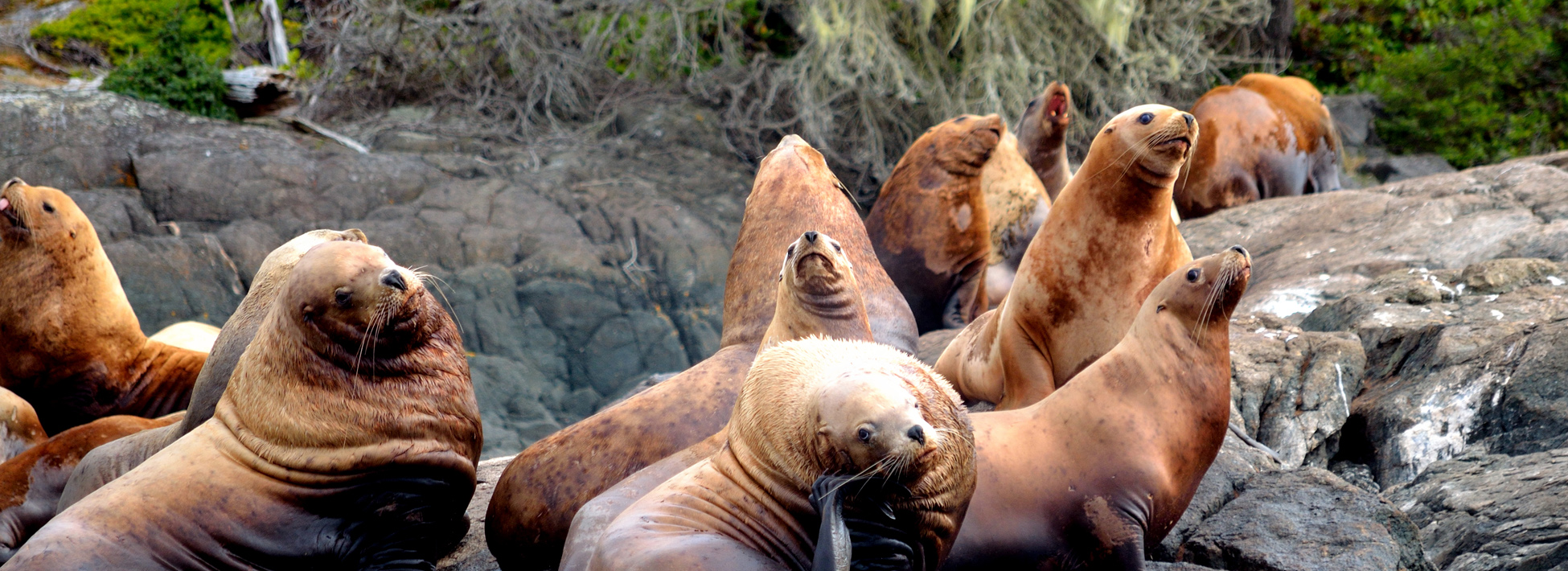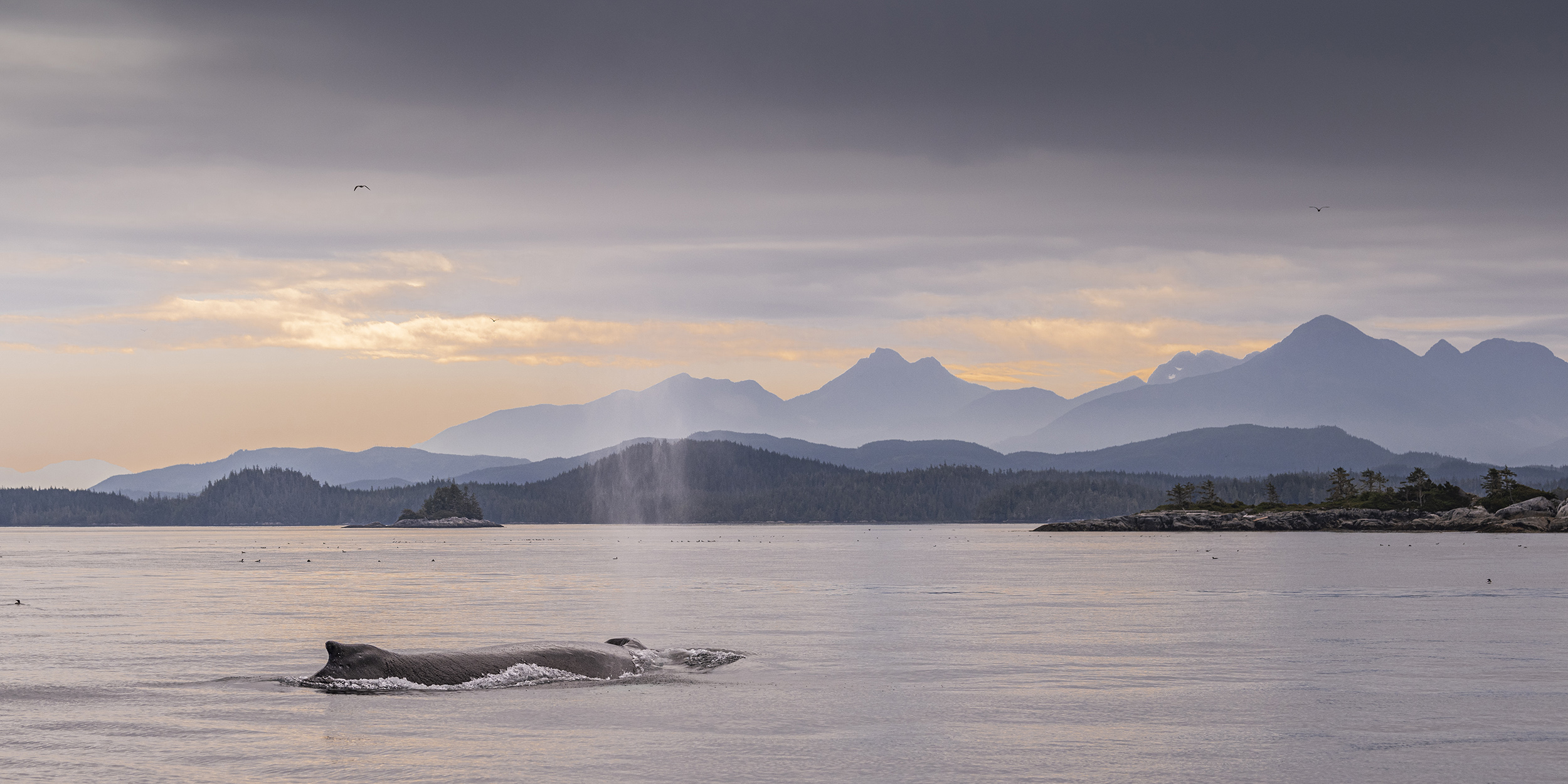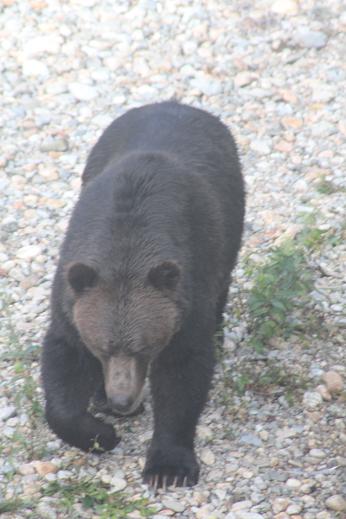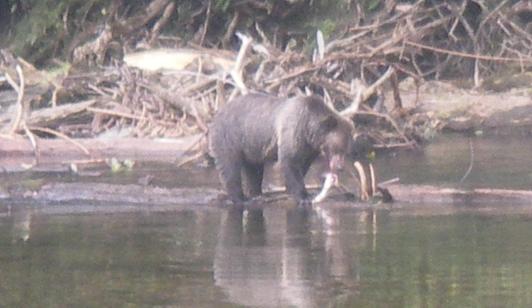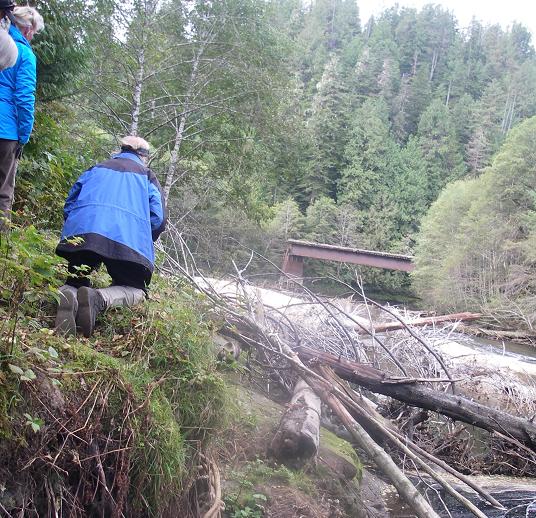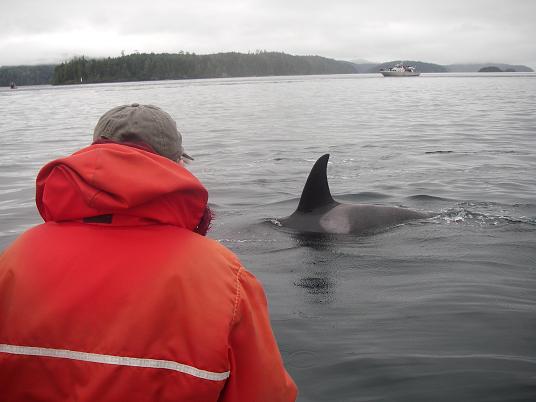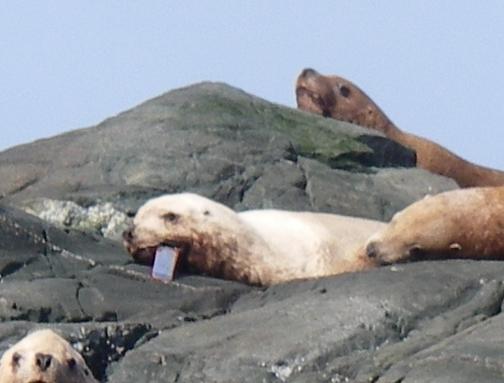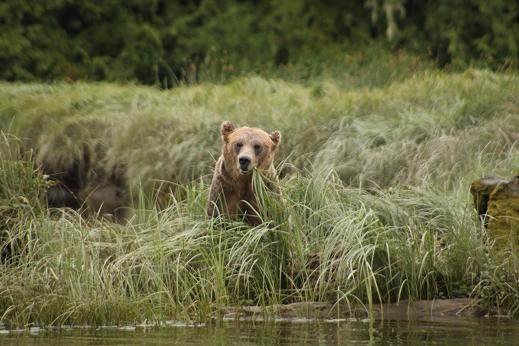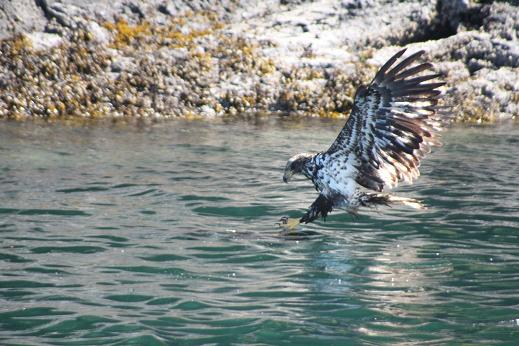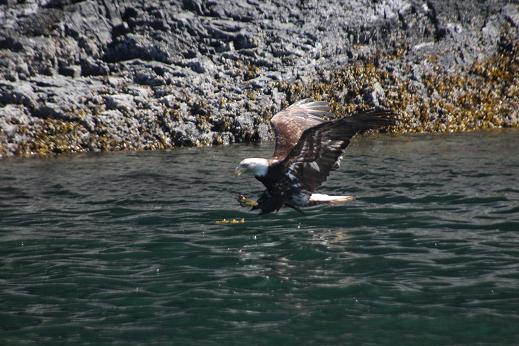Watching grizzly bears from the viewing stands on the Glendale River is a little different that from a boat in the river estuary. This is especially true when the bear walks directly below the stand. This downward perspective truly shows the size and bulk of this grizzly. This is a “well fed” bear that is a long way to fatting for hibernation. The photo was taken on September 2nd and means the bear still has two months to add additional layers of fat.
